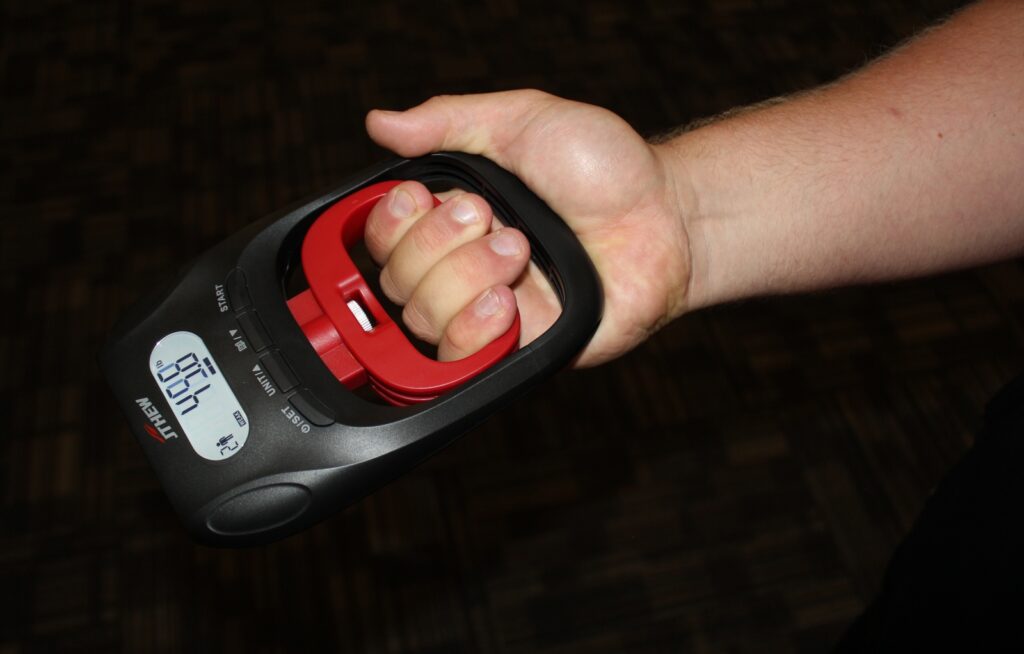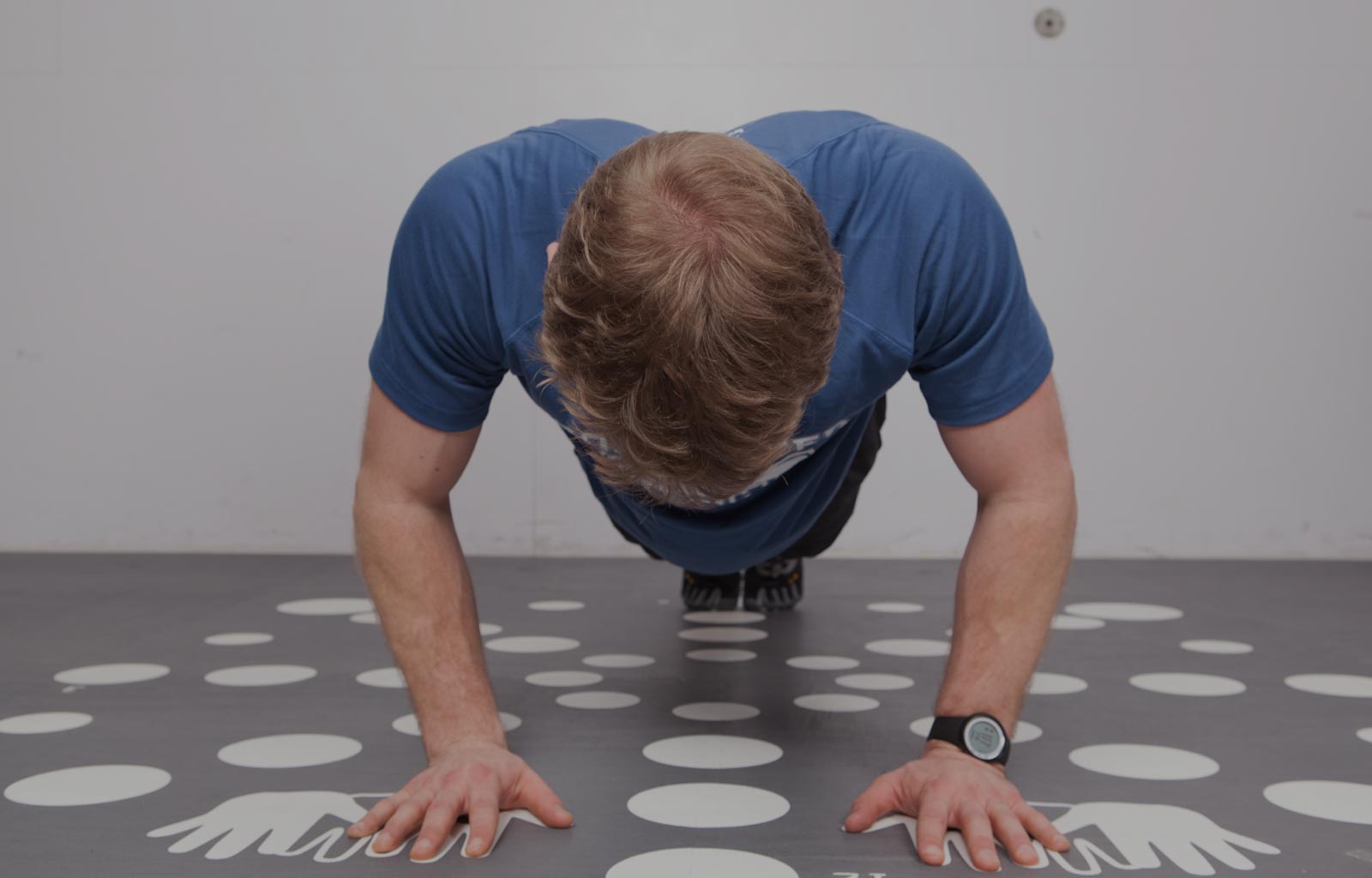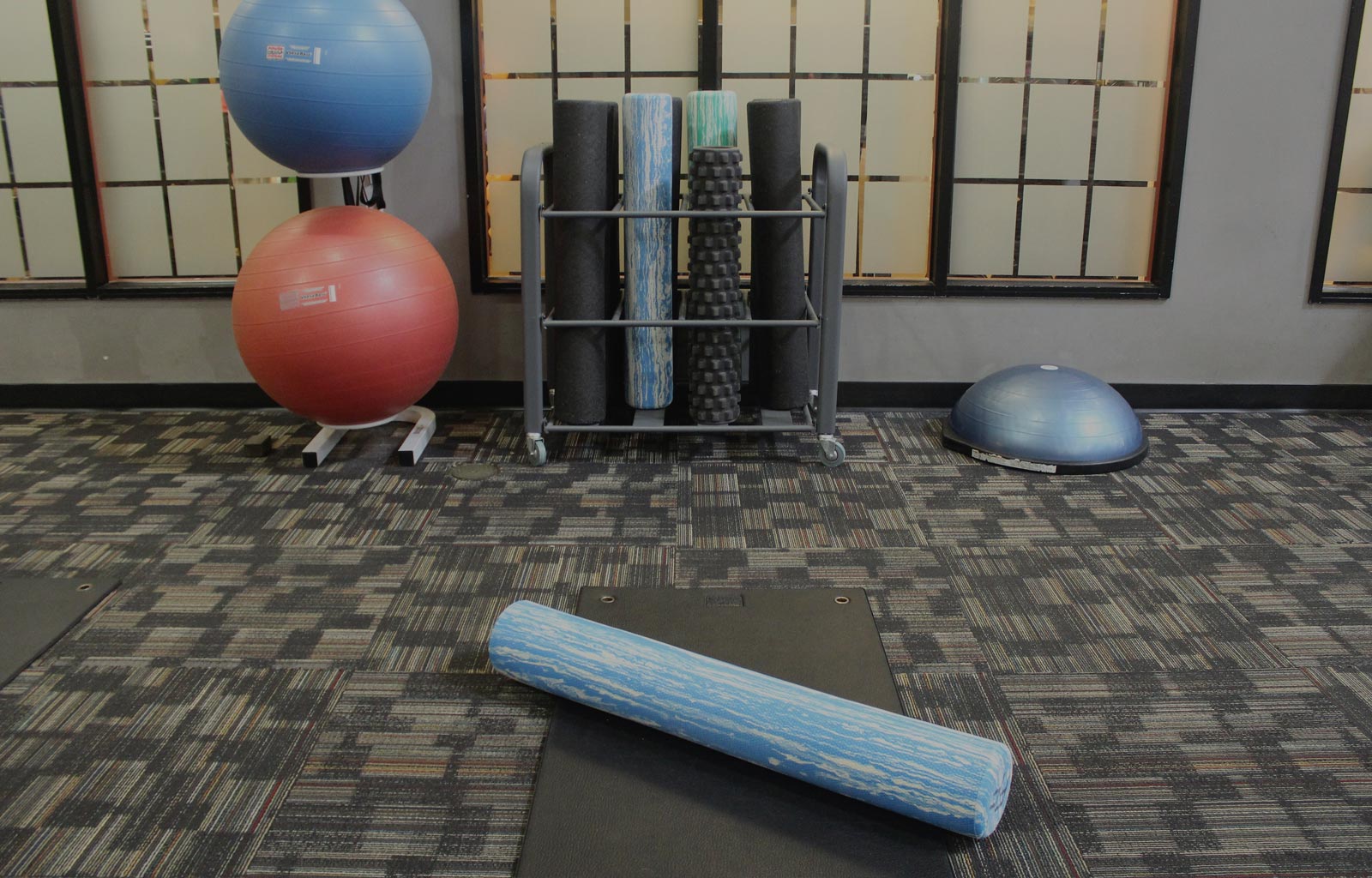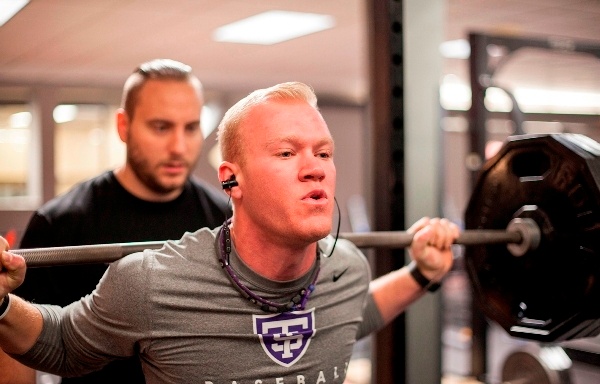If you’ve been reading the RAC Fitness Blog for some time you may recall seeing a series last summer on “Increased Strength to Improve Balance – What’s the Connection?“. In this month’s edition, we’re exploring the connection between hand grip strength and overall health, cognitive function, and longevity.
Your hand grip strength is more than a firm handshake or ability to open a jar lid, your grip tells a story about your health that extends far beyond your hands. It’s a narrative you have the power to rewrite with just a little time and effort. For those seeking optimal wellness and longevity, there is often a focus on cardiovascular fitness, flexibility, and visible muscle development. Yet grip strength may be one of the most powerful indicators of how successfully we’re aging.
Grip strength serves as a remarkable biomarker—a window into your general health status. Research consistently shows that declining grip strength correlates with increased mortality risk across all causes. This connection isn’t coincidental; grip strength reflects your overall muscle function and neuromuscular health.
When measured regularly, changes in grip strength can signal health shifts before other symptoms emerge. A 2018 study published in the British Medical Journal found that for each 5-kilogram (~10 pounds) decrease in grip strength, all-cause mortality risk increased by 16%. This makes grip strength assessment a valuable early warning system for both fitness professionals and health club members.
Perhaps most surprising is the relationship between grip strength and brain health.
Emerging research reveals that stronger grips often correlate with better cognitive function and reduced risk of cognitive decline. This mind-muscle connection makes intuitive sense when we consider that the same neural pathways controlling fine motor skills in our hands also support other essential brain functions.
One long-term study that tracked adults over 65 found that those maintaining stronger grip strength experienced slower rates of cognitive decline. The mechanisms behind this connection likely involve improved blood flow to the brain, reduced inflammation, and enhanced neuroplasticity—all benefits of regular strength training that manifest in both cognitive and physical performance.
For aging adults, independence hinges on the ability to perform daily activities without assistance. Opening doors, carrying groceries, supporting yourself while getting up from a chair—all these mundane tasks require adequate grip strength. When this diminishes, so does independence.
Preserving grip strength through targeted training helps maintain functional autonomy as we age. This translates to extended independent living, reduced healthcare costs, and improved quality of life—outcomes that matter deeply to every health club member focused on long-term wellness.
The connection between grip strength and longevity is so robust that researchers now regularly include handgrip dynamometer tests in aging studies. Like walking speed and single leg balance, grip strength offers valuable predictive information about life expectancy and healthy aging. A weak grip often indicates sarcopenia—the age-related loss of muscle mass—which contributes significantly to frailty and falls in older adults. By maintaining grip strength through consistent training, you’re not just working on your hands; you’re potentially adding quality years to your life.
Fortunately, improving grip strength doesn’t require specialized equipment. Many exercises already in your routine contribute to stronger hands and forearms:
- Deadlifts and farmer’s carries directly challenge grip endurance
- Pull-ups and rowing exercises enhance grip while working larger muscle groups
- Simple hand exercises with grippers or stress balls can be done anywhere
The key is consistency and progressive overload—gradually increasing the demands on your grip over time. Class instructors and personal trainers can incorporate grip-strengthening elements into existing routines without adding significant time to workouts.
Consider establishing your baseline grip strength using a handgrip dynamometer and tracking changes over time. This simple measurement provides valuable feedback about your training effectiveness and overall health trajectory. (This test is available on the Fitness Floor at the desk by request. We recommend that you test your grip to create a baseline, then follow a weekly plan for 12 weeks and re-test.)
Don’t underestimate the power held within your hands. Hand grip strength is more than just the ability to open a stubborn lid or having a firm handshake; it’s a vital indicator of your overall health, a potential contributor to cognitive well-being, and a significant factor in your journey towards a longer, healthier life. As a member of the RAC, you have the resources and support to make this often-overlooked aspect of fitness a priority. Start incorporating grip-strengthening exercises into your routine today – your future self will thank you for it.
For your information – the following is a table of norms* for men and women:
*Hand grip strength varies significantly by age and gender, generally peaking in the 30-39 age range for men and 40-49 age range for women. Men typically have stronger grip strength than women across all age groups.
Men:
- Ages 30-39: Average grip strength ranges from 97-115 lbs (44-52 kg).
- Ages 40-49: Average grip strength ranges from 93-107 lbs (42-49 kg).
- Ages 50-59: Average grip strength ranges from 85-99 lbs (39-45 kg).
- Ages 60-69: Average grip strength ranges from 75-105 lbs (34-48 kg).
Women:
- Ages 30-39: Average grip strength ranges from 54-64 lbs (25-29 kg).
- Ages 40-49: Average grip strength ranges from 48-60 lbs (22-27 kg).
- Ages 50-59: Average grip strength ranges from 43-54 lbs (20-25 kg).
- Ages 60-69: Average grip strength ranges from 50-52 lbs (23-25 kg).
Resources/Articles of Interest:
- Grip strength: The test for your chances of living to 100. BBC, 5 May, 2025
- Twenty weeks of isometric handgrip home training to lower blood pressure in hypertensive older adults: a study protocol for a randomized controlled trial. NIH, National Library of Medicine. 2018 Feb 9.
- “Strength as a Predictor of Longevity: Compelling Evidence”. Journal of Mens. Health 2022; 18(5): 113.
- “ Role of handgrip strength in predicting the quality of life in older adults: A cross-sectional study “. Journal of Education and Health Promotion 13(1):134, April 2024.
- “ Effect of isometric handgrip exercise on cognitive function: Current evidence, methodology, and safety considerations ”. Frontiers in Physiology, 03 October 2022.
- “The impact of isometric handgrip exercise and training on health-related factors: A review ”. Clinical Physiology and Functional Imaging. 24 January 2022.




